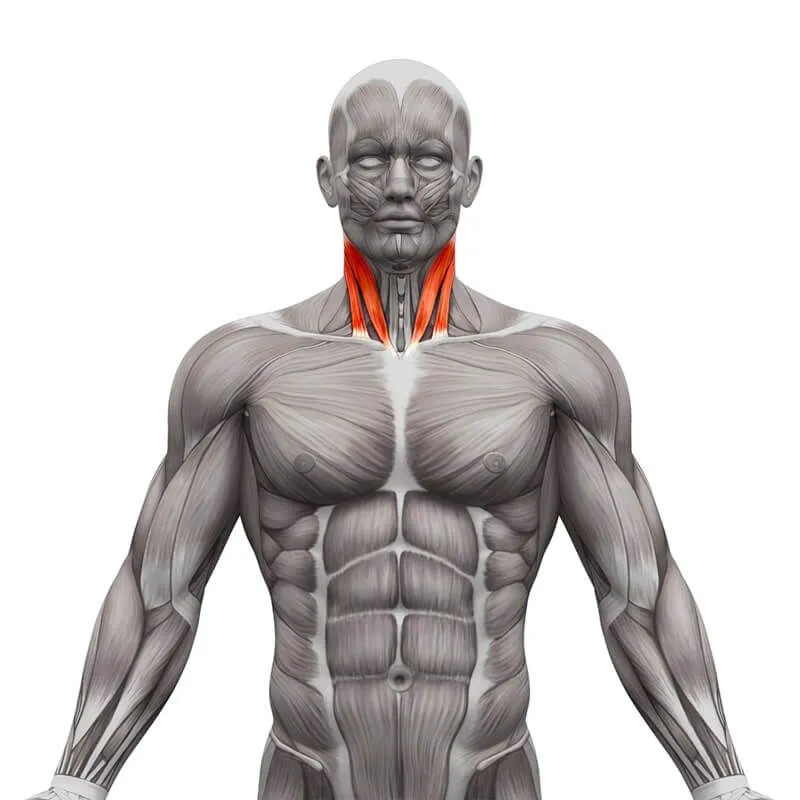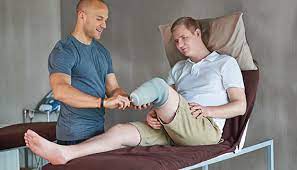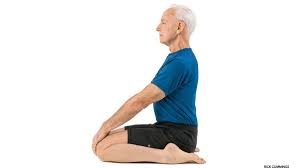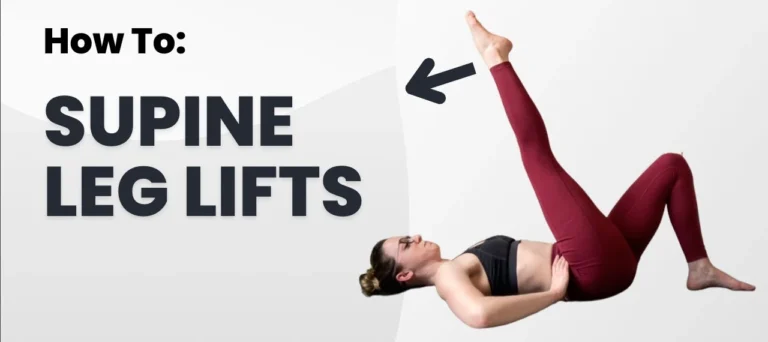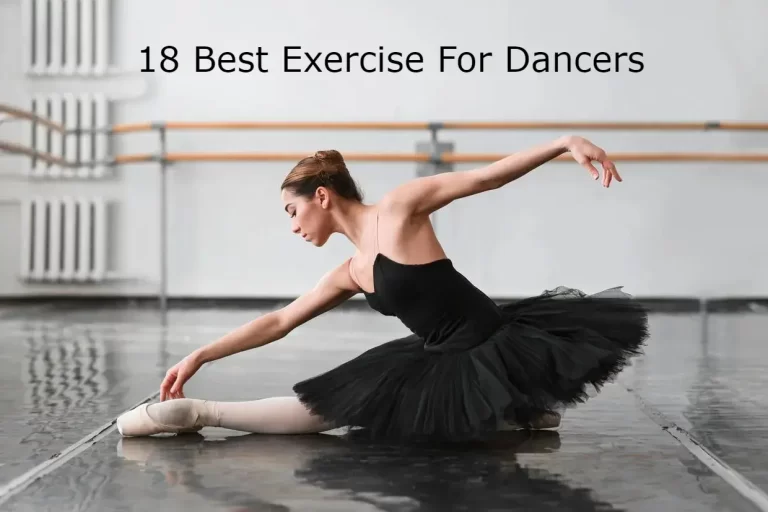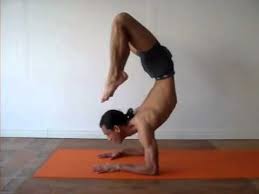Sternocleidomastoid muscle exercise
Table of Contents
Introduction
- Sternocleidomastoid muscle exercise helps to improve the strength of your SCM muscle. It helps you to improve the range of motion of the neck It helps you to boost your neck muscles It helps you to strengthen your upper back muscles. It also helps you to improve your posture.
- The sternocleidomastoid muscle is the two-headed long, bilateral muscle of the neck, and is the most visible muscle of the cervical. The main functions of the SCM muscle are rotation of the neck to the opposite side and flexion of the neck. The SCM muscle nerve supply is the accessory nerve.
- The muscle name sternocleidomastoid is derived from the manubrium of the sternum (Sterno-) and the clavicle (cleido-) and has an insertion at the mastoid process of the temporal bone of the skull.
- SCM muscle exercise includes two types of exercise
- Strengthening exercise
- Stretching exercise
Health benefits by doing an SCM muscle strengthening exercise.
- SCM muscle strengthening exercise helps to improve the strength of your SCM muscle
- It helps you to improve the range of motion of the neck
- It helps you to boost your neck muscles
- It helps you to strengthen your upper back muscles.
- It helps you to improve your posture.
- It helps you to Strengthen your SCM muscles
- It helps you to stabilize your neck
- It helps you to stabilize the upper back
- It helps you to decrease the strain on your neck and shoulder muscles
- It helps you to decrease chronic neck pain
Strengthening exercise
Neck rotations
- You can Sit or stand facing forward.
- Exhale and slowly turn your head to the right side, keeping your shoulders relaxed and down.
- Inhale and return to the center.
- Exhale and turn to look over your left side shoulder.
- Do 10 rotations on each side.
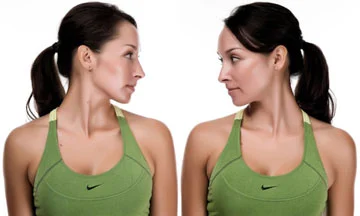
Head tilts
- You can Sit or stand facing forward.
- Exhale as you slowly tilt your right ear down toward the shoulder.
- Use your right hand to apply gentle pressure to your head to deepen the stretching.
- Hold for a few breaths, feeling the stretch on the side of your neck down to the collarbone.
- On an inhale, return to the beginning position.
- Repeat on the opposite side also.
- Do 10 tilts on each side.
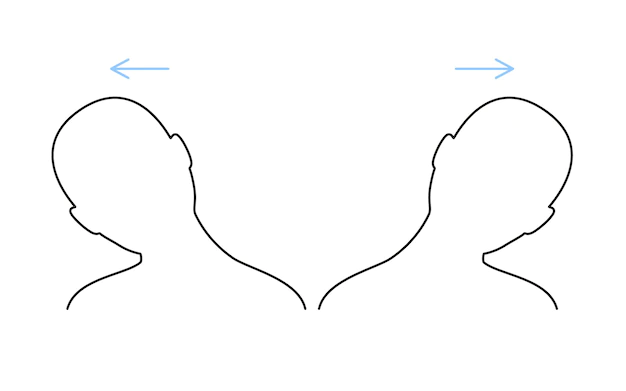
Revolved Triangle
- The patient’s position is to Stand with your feet about 4 feet apart.
- Face your right toe forward and the left toe out at a slight angle.
- Square your hips and face forward in the same direction the right toes are pointing.
- Lift your arms up at your sides so they are parallel to the floor.
- Slowly hinge at your hips to fold forward, stopping when your torso is parallel to the ground.
- Bring your left hand to your leg, the ground, or a block, wherever you can reach.
- Extend your right arm with your palm facing away from your body.
- Turn your gaze to look up toward the right thumb.
- Exhale to turn your neck to look down at the ground.
- Inhale as you return the gaze upward.
- Keep the rest of your body stable and continue these neck rotations as you stay in the pose for up to one minute.
- Perform on the opposite side also.
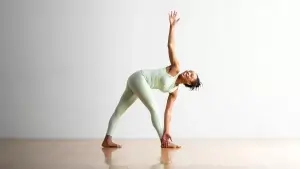
Upward Plank
- This pose allows you to passively hang the head back and down, releasing tension in the neck and shoulders. This lengthens and stretches the SCM, chest, and also shoulder muscles.
- Make sure the back of your neck is fully relaxed to avoid compressing the spine. If it is uncomfortable for you to let your head hang back, you can tuck your chin into your chest and lengthen the back of the neck. Focus on engaging the muscles of the neck without straining.
- You can also allow your head to hang back on some type of support such as the chair, the wall, or stacked blocks.
- Come into the seated position with your legs extended in front of you.
- Press your palms into the ground alongside the hips.
- Lift your hips and bring your feet under the knees.
- Deepen the pose by straightening the legs.
- Open your chest and let the head drop back.
- Hold for up to 30 seconds.
- Do this pose up to 3 times.
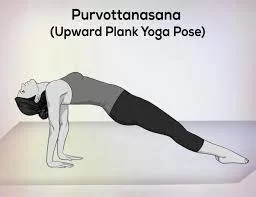
What are the benefits of SCM stretch?
There are some common benefits of Sternocleido mastoid muscle stretching
It Increases the range of motion of the neck
It Improves blood circulation in a neck area
It helps to relieve tension in the SCM muscle
It helps to reduce or relieve neck pain
It also helps to reduce stiffness in the neck area
Stretching exercise
SCM variation 1
- How to do this stretch
- Take the Sitting position in front of a table.
- Keep your chin down and in during the stretch.
- Place your right fist on the right side of the chin.
- Place your right elbow on the front of the table.
- Put the weight of your head onto the right fist.
- Now tilt your head to the right side.
- You can Put pressure on the chin to increase the stretch.
- You can feel a firm stretch on the left side of the neck.
- Hold this stretch for 30 seconds.
- Perform on the opposite side also.
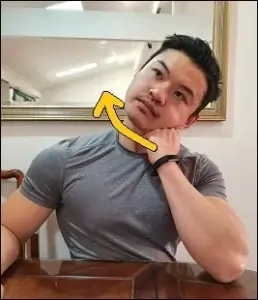
SCM variation 2
- How to do this stretch
- Tuck your chin inward and downward.
- Tilt your head to the right side.
- Then Place your right hand on the left side of the head.
- Give downward pressure.
- Now Gently turn your head to the left side.
- You can feel the firm stretch in the left Sternocleidomastoid.
- Hold this stretch for 30 seconds.
- Repeat on the left side.
SCM variation 3
- How to do this stretch
- Put your fingers on top of your left collarbone. Pull the skin down.
- Tuck your chin inward and downward.
- Then Slowly turn the head towards the left side.
- Tilt your head towards the right side.
- You can feel the stretch on the left Sternocleidomastoid.
- Hold this stretch for 30 seconds.
- Repeat on the right side.
SCM stretch has some other variations:
- Chair lean
- Neck elongation
- Head tilts
- Revolved triangle
- Upward plank
Chair lean
- How to do this stretch
- Take sit on a chair.
- Using your left hand, grab onto the side of a chair.
- Your shoulder should be completely relaxed.
- Lean your body fully towards the right side.
- Tuck your chin in and downward.
- Tilt the head towards the right side.
- Then Put your right hand on the left side of the head
- Give downward pressure.
- You can feel the stretch on the left Sternocleidomastoid.
- Hold this stretch for 30 seconds.
- Repeat on the right side.
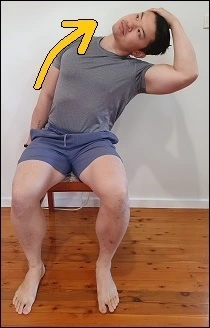
Neck elongation
- How to do this stretch
- Tuck your chin in and downward.
- Slide the head towards the left side.
- Then Elongate the left side of the neck in an upward direction.
- You can feel a stretch on the left side of the neck.
- Change the sides.
- Do 30 repetitions.
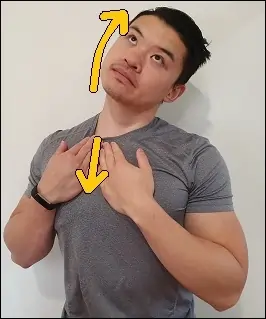
Head tilts
- How to do this stretch
- Take the Sitting or standing position facing forward.
- Exhale as you slowly tilt your left ear down toward the shoulder.
- Use your left hand to give gentle pressure on your head.
- Hold it for a few seconds, you can feel the stretch on the side of your neck down to your clavicle.
- Inhale and return to the starting position.
- Repeat on the right side.
- Do 10 tilts on both sides.
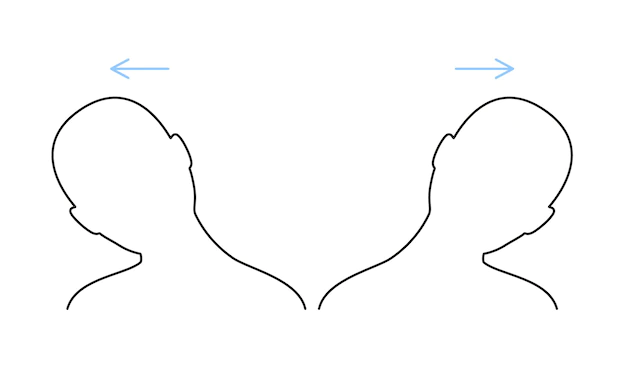
Revolved Triangle
- The patient’s position is to Stand with your feet about 4 feet apart.
- Face your right toe forward and the left toe out at a slight angle.
- Square your hips and face forward in the same direction the right toes are pointing.
- Lift your arms up at your sides so they are parallel to the floor.
- Slowly hinge at your hips to fold forward, stopping when your torso is parallel to the ground.
- Bring your left hand to your leg, the ground, or a block, wherever you can reach.
- Extend your right arm with your palm facing away from your body.
- Turn your gaze to look up toward the right thumb.
- Exhale to turn your neck to look down at the ground.
- Inhale as you return the gaze upward.
- Keep the rest of your body stable and continue these neck rotations as you stay in the pose for up to one minute.
- Perform on the opposite side also.

Upward Plank
- This pose allows you to passively hang the head back and down, releasing tension in the neck and shoulders. This lengthens and stretches the SCM, chest, and also shoulder muscles.
- Make sure the back of your neck is fully relaxed to avoid compressing the spine. If it is uncomfortable for you to let your head hang back, you can tuck your chin into your chest and lengthen the back of the neck. Focus on engaging the muscles of the neck without straining.
- You can also allow your head to hang back on some type of support such as the chair, the wall, or stacked blocks.
- Come into the seated position with your legs extended in front of you.
- Press your palms into the ground alongside the hips.
- Lift your hips and bring your feet under the knees.
- Deepen the pose by straightening the legs.
- Open your chest and let the head drop back.
- Hold for up to 30 seconds.
- Do this pose up to 3 times.

Precautions and safety for Sternocleidomastoid stretch
- Warm-up first: When you do stretching exercises, firstly do warm-up. Then start your stretching. It’s necessary for good stretching and the prevention of injuries.
- Increase stretch gradually: If you are a beginner then keep in mind that does not give extra force during the stretch which gives you an extra or deep stretch in your starting. Avoid that deep stretching and increase stretch gradually after some time. Starting with an end or deep stretching puts you in danger or do an injury like a sprain.
- Know your limits: When you perform stretching exercises, during that if you feel any pain stop right there. that sensation is going too deep into the stretching. Stop the movement immediately when you can feel pain. The signs of feeling pain are any pain in the joint or clenching of the jaw.
- Avoids dangerous methods: Ballistic stretching is very dangerous and includes bouncing the muscles. This causes micro-trauma in your muscles. This reduces the flexibility of muscles. You have to make sure movement should be even and smooth, not bouncy or jagged.
When you do not perform SCM stretching
- There are some things when you do not perform stretching:
- Do not perform while you have previous injuries.
- Do not perform when you have pain in your neck joint.
- Do not perform during a sprain in your muscles.
- Avoid stretching during a fracture of the spine or around the neck joint like a clavicle fracture.
- If you have any neck-related disease, then do not perform the stretch.
How to relax sternocleidomastoid
You can Sit or stand facing forward. Exhale as you slowly tilt your right ear down toward the shoulder. Use your right hand to apply gentle pressure to your head to deepen the stretching. Hold for a few breaths, feeling the stretch on the side of your neck down to the collarbone. On an inhale, return to the beginning position. Repeat on the opposite side also. Do 10 tilts on each side.
Sternocleidomastoid exercises names
Neck rotations
Chair lean
Neck elongation
Head tilts
Revolved triangle
Upward plank
Sternocleidomastoid stretch
Chair lean: to do this stretch, sit on a chair. Using your left hand, grab onto the side of a chair. Your shoulder should be completely relaxed. Lean your body fully towards the right side. Tuck your chin in and downward. Tilt the head towards the right side. Then Put your right hand on the left side of the head Give downward pressure. You can feel the stretch on the left Sternocleidomastoid. Hold this stretch for 30 seconds. Repeat on the right side.
Neck elongation: to do this stretch, Tuck your chin in and downward. Slide the head towards the left side. Then Elongate the left side of the neck in an upward direction.
You can feel a stretch on the left side of the neck. Change the sides. Do 30 repetitions.
Head tilts: You can Sit or stand facing forward. Exhale as you slowly tilt your right ear down toward the shoulder. Use your right hand to apply gentle pressure to your head to deepen the stretching. Hold for a few breaths, feeling the stretch on the side of your neck down to the collarbone. On an inhale, return to the beginning position. Repeat on the opposite side also. Do 10 tilts on each side.
FAQs
Head tilts: You can Sit or stand facing forward. Exhale as you slowly tilt your right ear down toward the shoulder. Use your right hand to apply gentle pressure to your head to deepen the stretching. Hold for a few breaths, feeling the stretch on the side of your neck down to the collarbone. On an inhale, return to the beginning position. Repeat on the opposite side also. Do 10 tilts on each side.
Head tilts: You can Sit or stand facing forward. Exhale as you slowly tilt your right ear down toward the shoulder. Use your right hand to apply gentle pressure to your head to deepen the stretching. Hold for a few breaths, feeling the stretch on the side of your neck down to the collarbone. On an inhale, return to the beginning position. Repeat on the opposite side also. Do 10 tilts on each side. Revolved Triangle: The patient’s position is to Stand with your feet about 4 feet apart. Face your right toe forward and the left toe out at a slight angle. Square your hips and face forward in the same direction the right toes are pointing. Lift your arms up at your sides so they are parallel to the floor.
Slowly hinge at your hips to fold forward, stopping when your torso is parallel to the ground. Bring your left hand to your leg, the ground, or a block, wherever you can reach. Extend your right arm with your palm facing away from your body.
Turn your gaze to look up toward the right thumb. Exhale to turn your neck to look down at the ground. Inhale as you return the gaze upward. Keep the rest of your body stable and continue these neck rotations as you stay in the pose for up to one minute.
Perform on the opposite side also.
You can Sit or stand facing forward. Exhale as you slowly tilt your right ear down toward the shoulder. Use your right hand to apply gentle pressure to your head to deepen the stretching. Hold for a few breaths, feeling the stretch on the side of your neck down to the collarbone. On an inhale, return to the beginning position. Repeat on the opposite side also. Do 10 tilts on each side.
You can Sit or stand facing forward. Exhale as you slowly tilt your right ear down toward the shoulder. Use your right hand to apply gentle pressure to your head to deepen the stretching. Hold for a few breaths, feeling the stretch on the side of your neck down to the collarbone. On an inhale, return to the beginning position. Repeat on the opposite side also. Do 10 tilts on each side.

